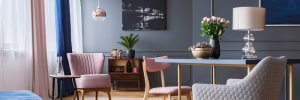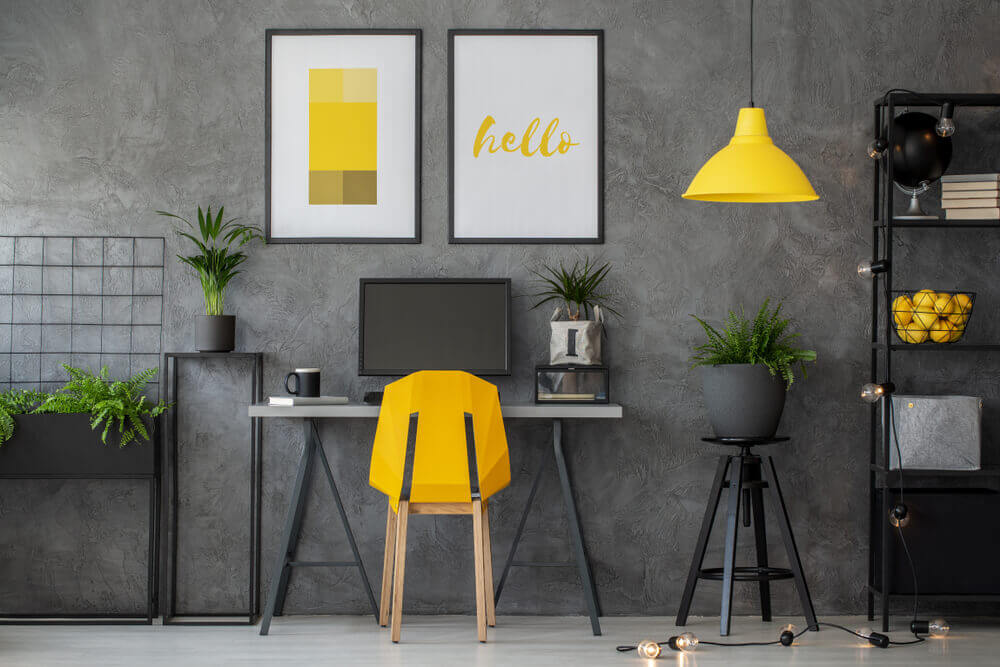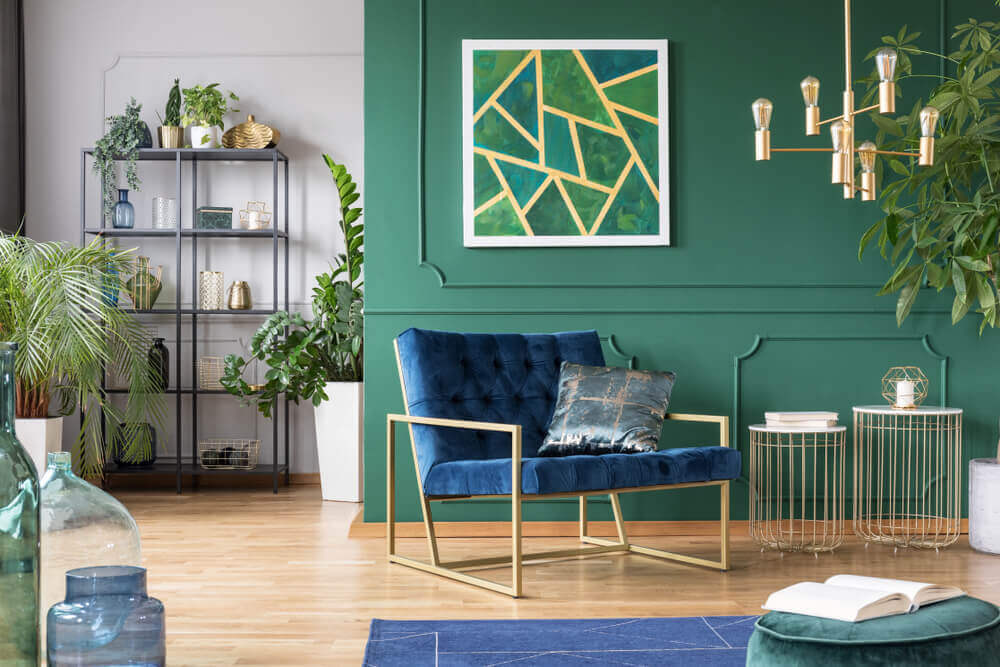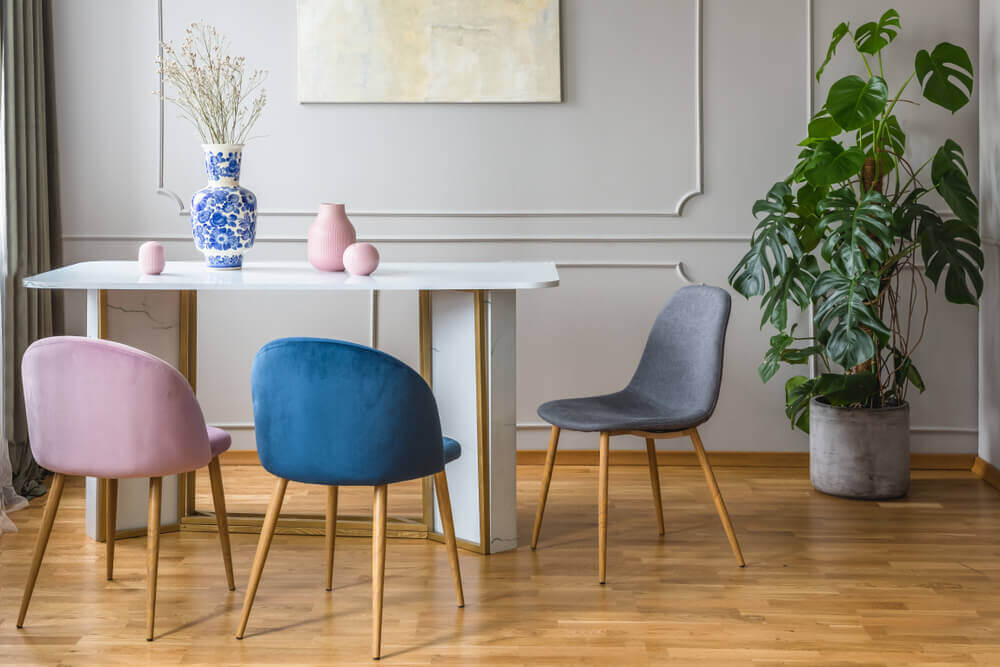Balance Your Home Decor: Ways to Success

Homes should have an organized decor that applies correct proportion and layout to the elements that make up each setting. So today, we want to show you how to successfully balance your home decor.
Order will come naturally into your settings as long as you know how to correctly design a space. You also have to know what it needs and how it works. Keeping these points in mind, you need to find a way to create a decor that you’re happy with.
The worst thing that you can do for your interiors is to neglect the balance of your home decor. Unbalanced features and poor placement can diminish your well-being and flood your rooms with uncertainty. Consequently, you’ll find yourself quite uncomfortable.
The main goal of balanced decor: keep sizes similar

Our first point for balanced home decor is that making sure your room’s features aren’t off-set. In other words, an object that is unusually bigger than the rest of a room’s pieces will have a negative effect on space.
Keeping the sizes of all your features in balance is key. Their measurements should be appropriate and coherent with the rest of the room. When the sizes of certain items are off, they throw off the overall harmony of the room and they lose their decorative appeal.
But following certain design parameters and taking measurements will ensure that your pieces flow together successfully.
Do your different decor items follow a the same sense of order?
Minding proportion is essential

Homes are homes because they contain furniture that you can plop down and rest on. But the key lies in everything following a certain set of parameters as well as in keeping an overall sense of coherence. Let’s take a look at what proportion means for home decor below:
- Measurements should suit your space. A big couch will be useless if it takes up the entire living room or if you can only use a random part of it. In this case, a big couch would only throw off your room’s balance.
- On the other hand, if you use smaller pieces just to fit more in your room, you’ll also be committing a serious mistake. Needlessly filling in spaces will only overwhelm your decor. Instead, use proportional furniture pieces.
- Your features should be coherent in size and shape. If you start with a dynamic decor style with curves, continue with the flow and don’t break it with elements that might clash.
- When you use proportional items together, you can enjoy well-being and comfort. Proportion helps you reach visual stability and you’ll be happy with how your room looks.
Chromatic harmony for a balanced decor

Colors, of course, play an important part in balancing home decor. They define a room and help enhance the ambiance. Most importantly, you use color to transmit who you are.
If you tend to lean towards earthy colors, pair them with other warm or neutral tones. But never use them with cool colors. Or, if you want cool colors to star in your setting, try matching them with neutral tones or simply with white.
Colors define a room. As a result, making sure they all work together is crucial. Harmony will flow naturally as long as you avoid mismatched colors that create visual tension.
Use only what the room allows
Just as we mentioned above, avoid overwhelming your setting by unnecessarily adding in random decor elements. Instead, choose pieces that you can actually use and serve a daily purpose.
Choose your decor accessories to suit your setting. While they won’t exactly be functional, they’ll help pull your ambiance together by serving as visual decor.
Homes should have an organized decor that applies correct proportion and layout to the elements that make up each setting. So today, we want to show you how to successfully balance your home decor.
Order will come naturally into your settings as long as you know how to correctly design a space. You also have to know what it needs and how it works. Keeping these points in mind, you need to find a way to create a decor that you’re happy with.
The worst thing that you can do for your interiors is to neglect the balance of your home decor. Unbalanced features and poor placement can diminish your well-being and flood your rooms with uncertainty. Consequently, you’ll find yourself quite uncomfortable.
The main goal of balanced decor: keep sizes similar

Our first point for balanced home decor is that making sure your room’s features aren’t off-set. In other words, an object that is unusually bigger than the rest of a room’s pieces will have a negative effect on space.
Keeping the sizes of all your features in balance is key. Their measurements should be appropriate and coherent with the rest of the room. When the sizes of certain items are off, they throw off the overall harmony of the room and they lose their decorative appeal.
But following certain design parameters and taking measurements will ensure that your pieces flow together successfully.
Do your different decor items follow a the same sense of order?
Minding proportion is essential

Homes are homes because they contain furniture that you can plop down and rest on. But the key lies in everything following a certain set of parameters as well as in keeping an overall sense of coherence. Let’s take a look at what proportion means for home decor below:
- Measurements should suit your space. A big couch will be useless if it takes up the entire living room or if you can only use a random part of it. In this case, a big couch would only throw off your room’s balance.
- On the other hand, if you use smaller pieces just to fit more in your room, you’ll also be committing a serious mistake. Needlessly filling in spaces will only overwhelm your decor. Instead, use proportional furniture pieces.
- Your features should be coherent in size and shape. If you start with a dynamic decor style with curves, continue with the flow and don’t break it with elements that might clash.
- When you use proportional items together, you can enjoy well-being and comfort. Proportion helps you reach visual stability and you’ll be happy with how your room looks.
Chromatic harmony for a balanced decor

Colors, of course, play an important part in balancing home decor. They define a room and help enhance the ambiance. Most importantly, you use color to transmit who you are.
If you tend to lean towards earthy colors, pair them with other warm or neutral tones. But never use them with cool colors. Or, if you want cool colors to star in your setting, try matching them with neutral tones or simply with white.
Colors define a room. As a result, making sure they all work together is crucial. Harmony will flow naturally as long as you avoid mismatched colors that create visual tension.
Use only what the room allows
Just as we mentioned above, avoid overwhelming your setting by unnecessarily adding in random decor elements. Instead, choose pieces that you can actually use and serve a daily purpose.
Choose your decor accessories to suit your setting. While they won’t exactly be functional, they’ll help pull your ambiance together by serving as visual decor.
All cited sources were thoroughly reviewed by our team to ensure their quality, reliability, currency, and validity. The bibliography of this article was considered reliable and of academic or scientific accuracy.
- Margolius, Marcia: Espacios para vivir, Barcelona, Ceac, 2006.







